Support Village Voice News With a Donation of Your Choice.
Beauty is ever evolving. What was considered not beautiful at one point in history may no longer be so at another point. The debate continues and offers each of us the chance to have our say. Is beauty artificial, in the eyes of the beholder, driven by characteristic traits such as kindness and confidence, or physical appearance such as built, curves, smile, hair, etc., ? Could we accept that beauty is not superficial but skin deep and as the older generation was known to say, “To each his own?” Is there a universal definition for beauty and what could attract the opposite’s attention?
Beauty is such a hot button topic universities have dedicated resources, including doing scientific research, to see whether or not there exists a standard of beauty. One such is ‘The Body Project’ done by Bradley University, Illinois, USA. The Project advises:-
“With images of ideal beauty bombarding us daily, it is easy to forget that standards of beauty are arbitrary and they vary greatly both from one culture to another and over time.
Such variations in ideals of beauty often reflect the roles women and men are expected to fulfill in a given society. For instance, in contexts where women are valued mainly for their fertility—their ability to bear and nurture children—often full-bodied women with broad hips and ample breasts are considered the most beautiful. In societies such as Fiji, large bodies are a symbol of one’s status and power. It is not surprising, therefore, that individuals who would be classified as obese in the US are considered the most attractive and desirable members of this culture.
But as social conditions and gender roles change, so do ideas about beauty. Consider some recent changes in the US. In the 1960s and 70s, beauty ideals for women shifted from the mature curvaceous body of stars such as Marilyn Monroe to the stick-thin, flat-chested figure epitomised by supermodels such as Twiggy or Kate Moss.
The compelling fact here is that just as women started to make dramatic gains in the areas of education, employment and politics, the ideal female body began to look like a malnourished preadolescent girl, weak, emaciated and non-threatening. Women may have been gaining in freedom and power, but they were increasingly encouraged to discipline their bodies through diet and exercise to conform to ideals that were almost impossible to achieve.
Now, however, we see the beauty standard for women becoming curvier in some areas such as the bust and butt, and staying thin, toned, and tucked in other areas such as the waist and the thighs. According to Hoff (2019), in a recent survey of 1,000 Americans, the “perfect” woman was described as 5’5”, 128 pounds, with a 26-inch waist. It would be almost impossible to achieve the proportions of this body ideal without using extremely unhealthy means.”
The Project thus urges that we ask ourselves the following:-
“Why is the American [or world] body ideal for women so unrealistic and unattainable?
Is the body ideal for men any more realistic or attainable than the ideal for women?
Does this tell us anything about the roles we expect men and women to fulfill?
Can you think of any plus-size celebrities today?
How are they portrayed and how has the movement changed within the last 5 years or so?”
At the end of the day, beauty is ultimately in the eyes of the beholder. It remains amorphous, ever changing.
Source- Bradley.edu
Regardless of the definition of beauty in any society, none can ignore the importance of being or feeling one’s best in their skin. Watch actress Priyanka Chopra shares her All-Natural, DIY (Do It Yourself) Skin Secrets
https://www.youtube.com/watch?v=948MLgRGNyU
















